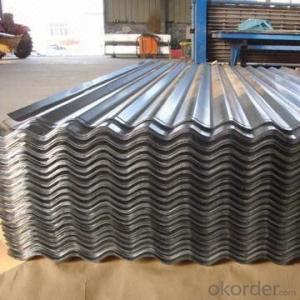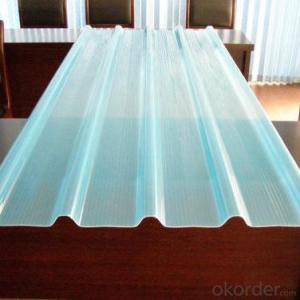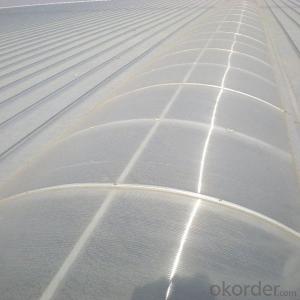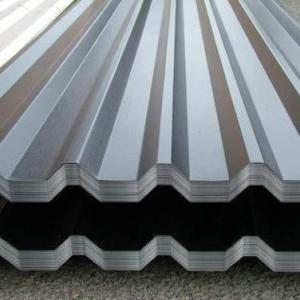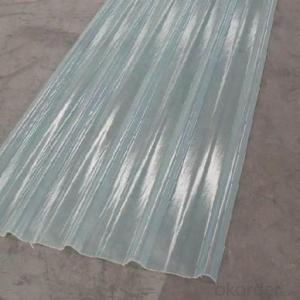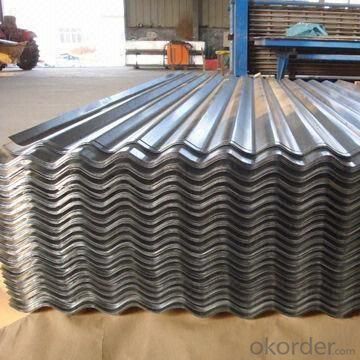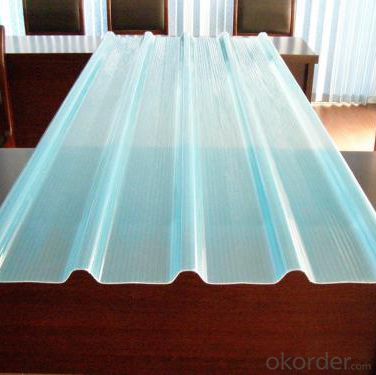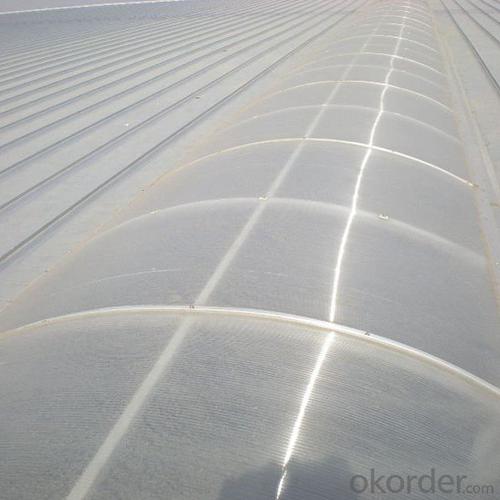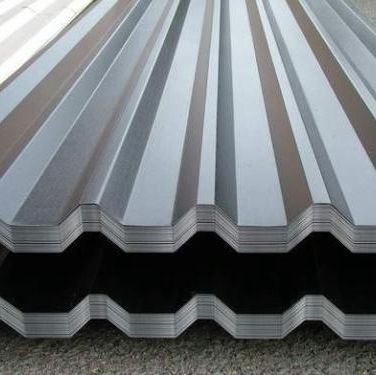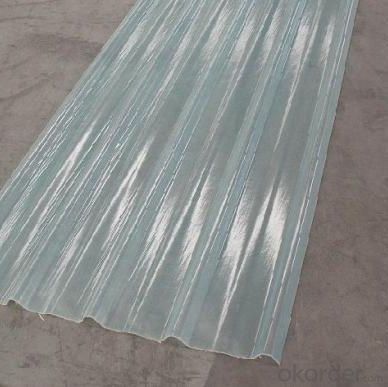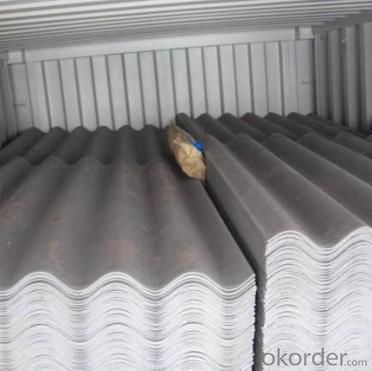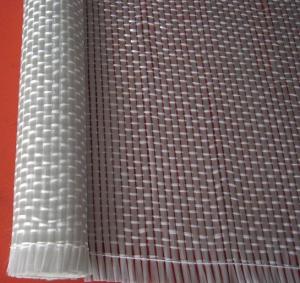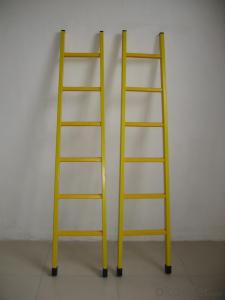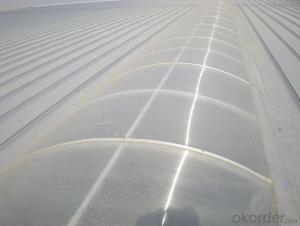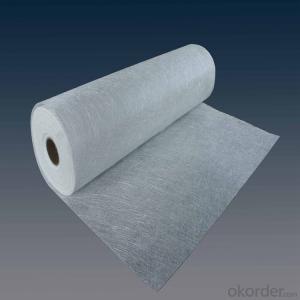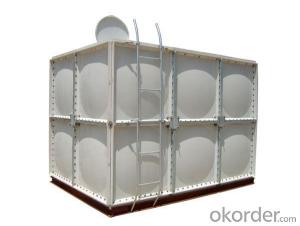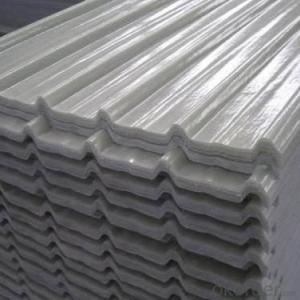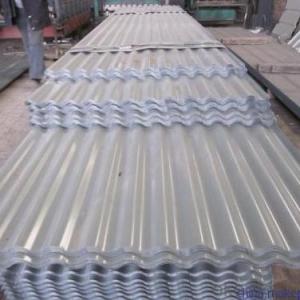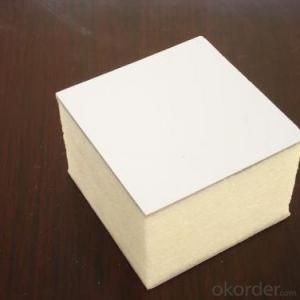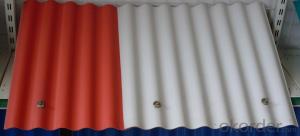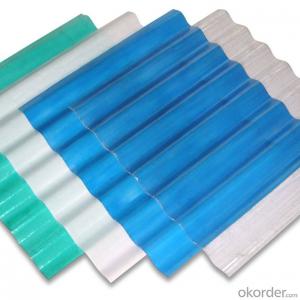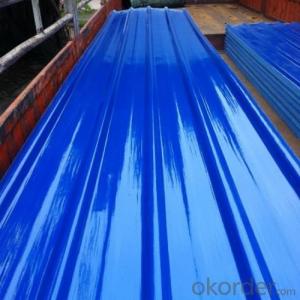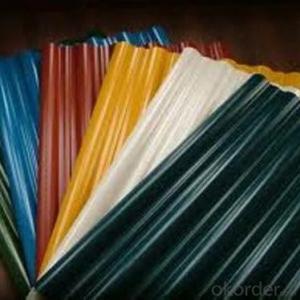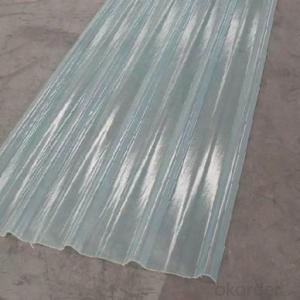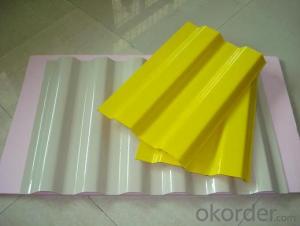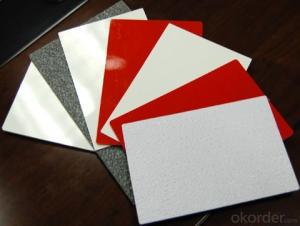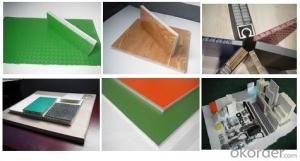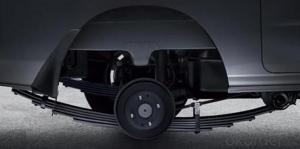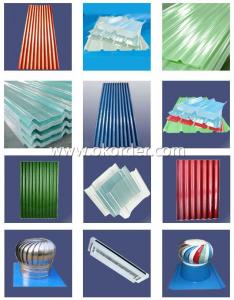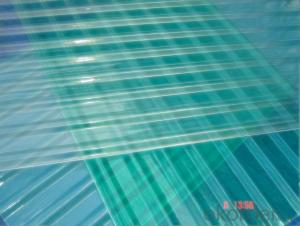High-Quality FRP Roofing Panel - FRP GRP Fiberglass Glassfiber Corrugated Roofing on Sale
- Loading Port:
- Tianjin
- Payment Terms:
- TT OR LC
- Min Order Qty:
- 20 m
- Supply Capability:
- 50000 m/month
OKorder Service Pledge
OKorder Financial Service
You Might Also Like
Specification
PRODUCT DESCRIPTION
FRP GRP Fiberglass Glassfiber Corrugated Roofing is a patent of our company, not like other FRP products, it is produced without yarn, instead, we use mat only. Therefore, the corrugated sheet is more strong in both horizontal and vertical direction.
Fiberglass corrugated sheet is usually used in construction site as protecting facility. It is dagarous for workers in building site since you never know if there is something hard drop down from the high area. So corrugated sheet is installed for preventing the stuff dropping down to hurt people.
Besides, it could also applied as the roof of the constructions.
FEATURES
>> Weatherability: In the temperature range of -40 ℃ - 120 ℃ to maintain stable performance, no high-temperature softening, cold brittle phenomenon;
>> Low thermal conductivity & good insulation performance;
>> Non-toxic, non-asbestos, etc., in line with world health standards;
>> No moss & prevent microbial growth;
>> High impact and resistant to strong wind;
>> Safe and reliable, Not combustion-supporting in open fire;
>> Corrosion resistance, suitable for chemical workshop roof, such as fertilizer plants, electroplating factory
SPECIFICATIONS
Item | Description | ||
Material | FRP, ASA, PVC | ||
Thickness | 1.0mm - 3.0mm | ||
Color | Clear, milk white, blue, green, red | ||
Type | 475, 666, 760, 820, 840, 860, 900, 950, 980, 1050, can be customized | ||
Shelf life | 15 years | ||
PICTURES
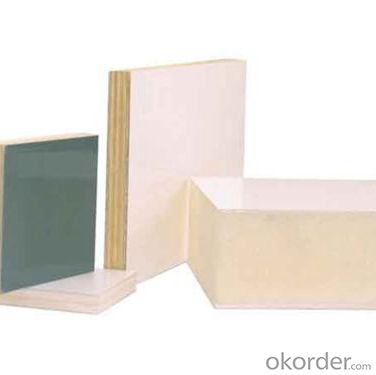
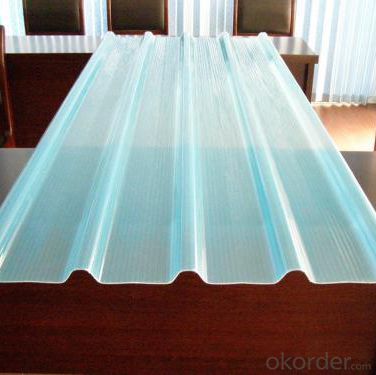
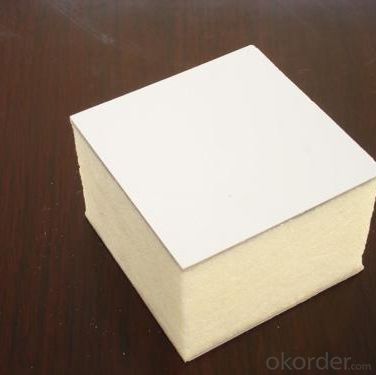
- Q: Are FRP roofing panels environmentally friendly?
- Yes, FRP (Fiberglass Reinforced Plastic) roofing panels can be considered environmentally friendly for several reasons. First, FRP is a highly durable material that has a long lifespan, reducing the need for frequent replacements and minimizing waste. Additionally, FRP panels are lightweight, which means they require less energy to transport and install, resulting in a lower carbon footprint compared to heavier roofing materials. Furthermore, FRP panels are resistant to corrosion, chemicals, and UV radiation, which extends their lifespan and reduces the need for maintenance and chemical treatments. This reduces the use of harmful substances and minimizes the environmental impact associated with maintenance activities. Moreover, FRP roofing panels are often made from recycled materials or are themselves recyclable at the end of their lifespan. The ability to recycle FRP panels reduces the amount of waste going to landfills and contributes to a more sustainable waste management system. Lastly, FRP roofing panels have excellent insulation properties, which can help reduce the energy consumption of buildings by maintaining comfortable interior temperatures and reducing the reliance on heating or cooling systems. This energy efficiency contributes to a lower carbon footprint and a more environmentally friendly building operation. Overall, while it is important to consider the specific manufacturing processes and practices of individual FRP roofing panel manufacturers, FRP roofing panels are generally considered to be environmentally friendly due to their durability, recyclability, energy efficiency, and reduced maintenance requirements.
- Q: Can FRP roofing panels be used for sheds?
- Yes, FRP (Fiberglass Reinforced Plastic) roofing panels can be used for sheds. FRP panels are lightweight, durable, and offer excellent weather resistance, making them a suitable choice for shed roofing. They provide protection against UV rays, rain, snow, and other environmental elements. Additionally, FRP panels are easy to install, require minimal maintenance, and have a long lifespan. They also come in various colors and styles, allowing you to choose a design that complements your shed's aesthetics. Overall, FRP roofing panels are a practical and cost-effective solution for shed construction.
- Q: Are FRP roofing panels compatible with different roofing systems?
- Yes, FRP (Fiberglass Reinforced Plastic) roofing panels are compatible with different roofing systems. They can be used with various types of roofing systems such as metal, asphalt, or concrete roofs, making them a versatile option for different construction projects.
- Q: Do FRP roofing panels require specific safety precautions during installation?
- During the installation of FRP (Fiberglass Reinforced Plastic) roofing panels, it is imperative to take specific safety precautions. Firstly, it is crucial to provide the installers with the necessary safety equipment and ensure its use. This includes safety harnesses, hard hats, gloves, goggles, and non-slip footwear. These safety measures are essential to safeguard installers against potential falls, head injuries, hand injuries, and eye injuries. Secondly, it is important to adhere to proper handling and lifting techniques when working with FRP roofing panels. These panels can be cumbersome and weighty, so it is vital to have an adequate number of personnel and employ appropriate lifting techniques to prevent strains and other lifting-related injuries. Furthermore, it is crucial to exercise caution regarding potential electrical hazards during installation. FRP roofing panels are often installed on structures that may have nearby electrical wiring or equipment. Installers should undergo training to identify and avoid electrical hazards, and it may be necessary to deactivate power in certain areas during installation to minimize the risk of electric shock. Lastly, it is imperative to strictly adhere to the manufacturer's guidelines and instructions for installation. FRP roofing panels may have specific requirements, such as recommended temperatures, adhesives, or fasteners. By following these guidelines, installers can ensure the proper installation of the panels and minimize the risk of accidents or structural failures. In conclusion, specific safety precautions are necessary during the installation of FRP roofing panels. By providing and utilizing the required safety equipment, following appropriate handling and lifting techniques, being cautious of electrical hazards, and adhering to the manufacturer's guidelines, installers can guarantee a safe and successful installation process.
- Q: Do FRP roofing panels require a specific type of roof coating?
- A specific type of roof coating is not always necessary for FRP roofing panels. Nonetheless, it is advisable to opt for a coating that is both compatible with the material and provides safeguard against UV rays, weathering, and potential harm. To ascertain the most suitable coating for your particular FRP roofing panels, it is crucial to refer to the manufacturer's guidelines or consult a roofing expert. Additionally, factors such as climate, building location, and aesthetic preferences may also influence the choice of coating.
- Q: Are FRP roofing panels suitable for residential applications?
- Yes, FRP roofing panels are suitable for residential applications. They offer durability, weather resistance, and are lightweight, making them a practical and cost-effective choice for residential roofs. Additionally, FRP panels can be easily installed and require minimal maintenance, making them a convenient option for homeowners.
- Q: Can FRP roofing panels be used in cold climates?
- Yes, FRP roofing panels can be used in cold climates. FRP (Fiberglass Reinforced Plastic) panels are known for their durability and resistance to extreme weather conditions, including cold temperatures. They can withstand freezing temperatures and provide effective insulation, making them suitable for use in cold climates.
- Q: Are FRP roofing panels suitable for shopping malls or retail complexes?
- Yes, FRP (Fiberglass Reinforced Plastic) roofing panels are suitable for shopping malls or retail complexes. FRP roofing panels are lightweight, durable, and provide excellent resistance against weather elements such as UV rays, moisture, and corrosion. They offer high strength and can withstand heavy foot traffic and potential impacts. Additionally, FRP panels are versatile and can be customized to match the aesthetic requirements of shopping malls or retail complexes, making them a suitable choice for roofing applications in such settings.
- Q: Are FRP roofing panels resistant to warping or sagging due to heat?
- FRP roofing panels possess a well-known ability to withstand heat without warping or sagging. Their composition, which includes fiberglass reinforcement, grants them exceptional strength and stability, even in high-temperature environments. This reinforcement effectively prevents warping or sagging, guaranteeing the panels' long-lasting durability and performance. Furthermore, in addition to the fiberglass reinforcement, FRP panels are engineered with low thermal expansion properties. This means that they experience minimal expansion or contraction when exposed to temperature changes, thus reducing the risk of warping or sagging. These panels are carefully designed to endure heat and maintain their shape and structural integrity, establishing them as a dependable choice for roofing applications. It is important to note that although FRP panels are resistant to warping or sagging caused by heat, proper installation and maintenance are vital to ensure their longevity. Adhering to manufacturer guidelines and regularly inspecting and maintaining the roof will greatly enhance the performance and lifespan of the FRP roofing panels.
- Q: Do FRP roofing panels require a specific slope for drainage?
- FRP roofing panels necessitate a particular slope to ensure efficient drainage. Despite their known durability and resistance to weathering, FRP roofing panels must be installed with an adequate slope to allow water to flow off the roof effectively. Typically, the recommended slope for FRP roofing panels falls within the range of 1/4 to 1/2 inch of vertical drop per foot of horizontal distance. This slope guarantees unhindered water flow, preventing the accumulation of pooled or stagnant water on the roof surface. Proper drainage is crucial in preventing water leakage, potential damage to the roofing system, and the growth of mold or algae. Furthermore, a well-designed slope facilitates easier maintenance and cleaning of the roof surface. Determining the specific slope requirements for FRP roofing panels necessitates consulting the manufacturer's guidelines and recommendations. Different manufacturers may have slight variations in their specifications. Additionally, local building codes and regulations may dictate minimum slope requirements for drainage purposes. In conclusion, maintaining the longevity and functionality of FRP roofing panels relies on ensuring a specific slope for proper drainage. Adhering to slope requirements during installation will prevent water-related issues and guarantee the overall performance of the roofing system.
Send your message to us
High-Quality FRP Roofing Panel - FRP GRP Fiberglass Glassfiber Corrugated Roofing on Sale
- Loading Port:
- Tianjin
- Payment Terms:
- TT OR LC
- Min Order Qty:
- 20 m
- Supply Capability:
- 50000 m/month
OKorder Service Pledge
OKorder Financial Service
Similar products
Hot products
Hot Searches
Related keywords
